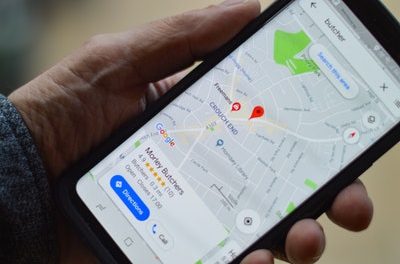
SEO Crash Course: Seven Tricks to Improve Your Graphic Design Website Today

Wondering how to get more customers for your graphic design business? An SEO crash course might be just the thing you need.
When you’re working on graphic design every day, learning SEO can seem like too big of a task. However, you can get game-changing results with just a crash-course level of SEO knowledge.
SEO is unique in that it’s always changing, so it’s always relevant. Five years ago, it was already an important aspect of marketing. Today, it might be more valuable than ever before. And you don’t have to invest a ton of time to learn what you need. Just with the basics, you can start making changes that will draw new customers into your graphic design site.
Ready for your SEO crash course? Keep reading to learn the skills that will help you beat your graphic design competition.
1. Use Visual Appeal
SEO is all about creating content to post on your website. Of course, it can also involve a well-rounded approach that includes social media and other strategies. But in the SEO world, content is king.
This gives you the perfect place to flex your graphic design skills. As you create content to publish on your site’s blog section, work extra hard to make it visually attractive. That way, the optimized content will draw people to your site, and the impressive visual design will work as an advertisement for your skills.
That doesn’t mean your content should be all pretty packaging with no real substance. You also need high-quality content, whether it’s in the form of text, video, infographic, or something else. But since you already have graphic design skills, you might as well use them to make your content that much more impressive.
2. Be Hands-On
Making your content visually attractive is one way to keep things hands-on in your SEO approach. You should stay involved with content creating and with every step of the SEO process to really learn what you’re doing.
It’s tempting to outsource every part of the SEO process. It is a good idea to hire some people with professional expertise to help you get started – view here for some ideas of who to hire. But you should also control as much as you can yourself to learn the industry as you go.
Ideally, you already have a website that you have control over. Work on posting your own content, tracking the analytics yourself, and running your own social media campaigns.
You shouldn’t let this work take you away from your day-to-day graphic design work of course. But if you can work some of it into your schedule, you’ll get a lot more out of your SEO crash course.
3. Know Your Target Audience
The better you know who you’re creating content for, the better that content is going to be. Before you get started and throughout the process, learn what you can about your target audience.
This means more than just finding out what they’re interested in. Find out who they are, what areas they live in, and what they do for fun. How old is your target reader? What kind of education do they have? And most importantly, what can you offer that will be helpful to them?
People want to click on content that brings value to their lives. The better you understand their lives, the better you can make your content. Good SEO is all about meeting the needs of your target customers.
4. Teach Yourself for Free
As you get started, you’ll likely run into a lot of questions during your SEO journey. However, you don’t need to sink a lot of money into finding the answers. Before you spend big bucks on SEO, use the free resources that are available to help you troubleshoot.
There are free trainings online, as well as detailed guides to specific aspects of SEO. You’ll often be able to find your answers with minimal effort and no money as SEO experts have made their knowledge easy to access online.
In fact, you’ve already taken the first step by reading this post!
5. Learn Keywords
Using the right keywords allows search engines to find and rank your content. This is another place where free resources will come in handy. Use free online software to search for relevant industry keywords, so you can work them into your content.
The best keywords are neither too obscure nor too popular. Longer keywords, such as entire phrases, tend to work better than single words. You can build your content strategy around great keywords to get the best results.
6. Use Links Wisely
Using links is another core part of any basic SEO approach.
First, you’ll need to make sure to include internal links in your posts. This means linking to other posts or other pages on your site, creating a network of links that will keep readers moving around on your site. It’s also valuable to link out to other reliable sites as sources of information. This shows you’re offering something valuable to your readers.
Finally, you should work on getting other sites to link back to your site as a resource. This is the hardest part. However, if you can get these backlinks, it’s a valuable message to your site’s visitors that you are an expert in your industry.
7. Add Calls to Action
Finally to make your posts really valuable, always include a call to action. This can be an invitation to read another post, make a purchase, or sign up for your email newsletter. This helps your content have a purpose and gives you the results you want.
How to Use This SEO Crash Course
Once you start getting into SEO, you’ll probably find it’s hard to stop. This SEO crash course gives you just a taste, but the excitement of learning how to grow your graphic design brand using SEO is contagious.
Looking for ways to take your SEO strategy to the next level once you’ve learned the basics? Don’t miss our guide to using podcasting as part of your strategy.











































